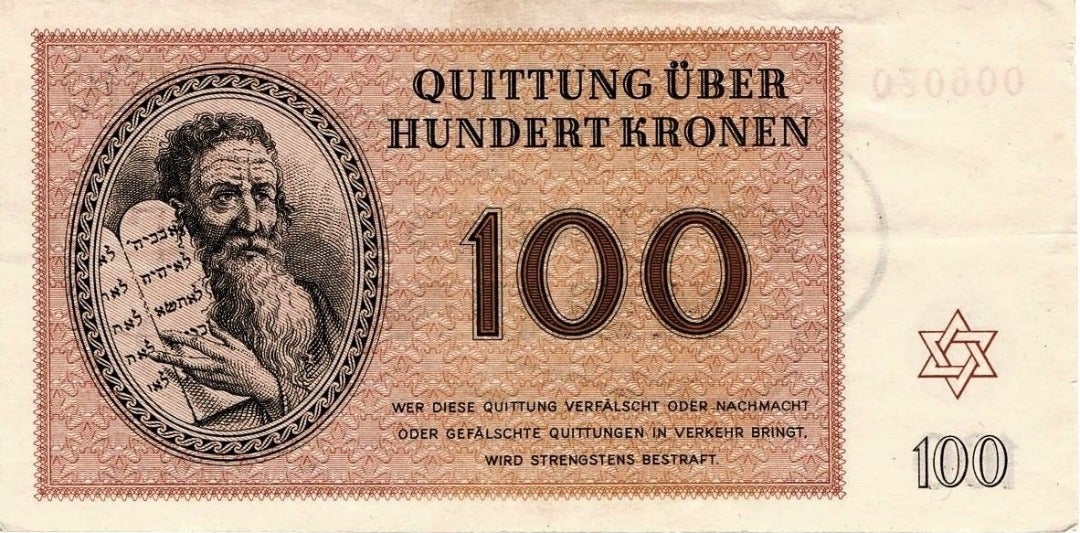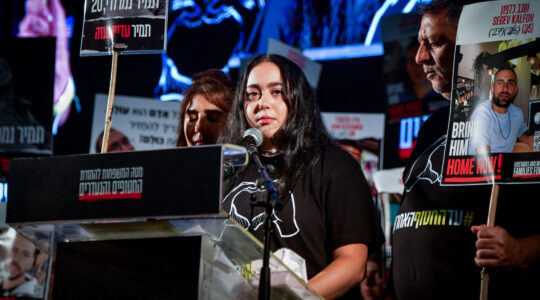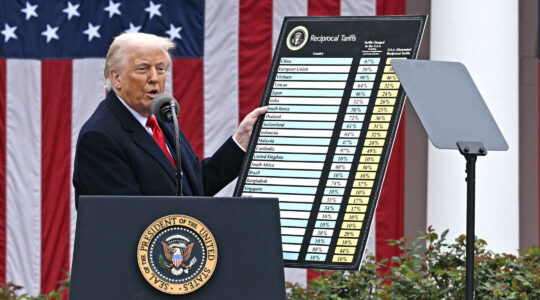JERUSALEM (JTA) — Currency used in the Theresienstadt Ghetto was donated to the National Library of Israel.
The six bills featuring a Star of David and a sketch of Moses holding the Ten Commandments were received by the National Library days before Israel’s Yom Hashoah, or Holocaust Remembrance Day. They are worth a total of 263 Kronen, the currency of the ghetto, which was located in northwestern Czechoslovakia.
Every ghetto resident was forced to convert his money and some property into the currency of the camp or ghetto in which he was imprisoned. If someone managed to escape, he then had no way to purchase food or clothes.
The bills were donated by Ruth Brass of Britain in honor of her father, the late Lionel Schalit, a prominent Zionist and community activist and a leader in the European Maccabi Movement.
“It seems that the bank, the bills and the ‘wages’ received by many prisoners during imprisonment in the ghetto had an additional role: they gave the impression of ‘normalcy;’ of an orderly and routine everyday life that the Nazis indeed tried to present to the official representatives of the Red Cross who visited the Terezin Ghetto. The bills present documentation of the chilling reality in the days of the Holocaust: imaginary symbols of a ‘normalcy’ that never existed, under the shadow of persecution and eradication,” according to National Library of Israel expert Dr. Stefan Litt.
JTA has documented Jewish history in real-time for over a century. Keep our journalism strong by joining us in supporting independent, award-winning reporting.






